On Sunday’s day of reckoning in the NFC East, the Cowboys were the ones found wanting. Their 17-9 loss to the Eagles dropped Jerry Jones’ team out of first place in the East. The Eagles can clinch the division with a win over the Giants or a Cowboys loss against Washington in Week 17. ESPN’s Football Power Index (FPI) gives Dallas a 27% chance of rising from the dead and sneaking its way back into the postseason.
Even if the 7-8 Cowboys somehow manage to overcome the odds and win the division in Week 17, it’s fair to mark down their 2019 regular season as a colossal disappointment. They’re not the only would-be playoff contender that failed to live up to expectations in 2019.
Let’s go through six NFL teams that disappointed their fans and most onlookers in 2019, identify what went wrong and figure out how/whether those organizations might fix their woes in 2020. The other five teams have all been eliminated from postseason contention, but because the Cowboys still have a glimmer of hope, let’s start with them:
Jump to a team:
ATL | CHI | CLE
DAL | LAC | LAR

![]()
1. The defense simply wasn’t good. The Cowboys were 22nd in defensive DVOA heading into Sunday’s loss, and while they held Philadelphia to 17 points, they allowed an Eagles team that was down to Dallas Goedert, Miles Sanders and practice-squad guys as weapons at times during this contest to rack up 431 yards and hold the ball for more than 36 minutes. Carson Wentz was sacked just once on 41 dropbacks, and the Eagles would have scored more if it weren’t for a pair of missed field goals from Jake Elliott.
2 Related
The Cowboys didn’t do enough to add to their defense from a year ago, owing in part to the fact that they traded their 2019 first-round pick for much-needed receiving help in the form of Amari Cooper. Jones used his second-round pick on Trysten Hill, but the defensive tackle played only 102 defensive snaps and was a healthy scratch Sunday. A secondary that looked to be promising a year ago could have desperately used a player like Jets star Jamal Adams, but Dallas’ attempt to trade for Adams at the deadline fell short, and the Eagles picked on overmatched defensive backs such as Chidobe Awuzie, Xavier Woods and Jeff Heath in coverage Sunday.
Jones did make smart trades in adding Michael Bennett and Robert Quinn to the defensive line, but they didn’t make up for a precipitous decline from franchise pass-rusher DeMarcus Lawrence. After he broke out with 24.5 sacks from 2017 to 2018, the Cowboys gave Lawrence a five-year, $105 million deal this past offseason. He hasn’t been the same player, as the 27-year-old has racked up five sacks and 15 knockdowns in 15 games. Lawrence has a half-sack to show for the second half of the season, and the Cowboys have ranked 23rd in both sack rate and pressure rate since Week 10. They pressured Wentz on just 18.2% of his dropbacks Sunday.
Dallas has been without Leighton Vander Esch for most of that time frame, as the star linebacker went down in Week 11 with a neck injury. Losing an impactful every-down player like Vander Esch hurts, but the Cowboys have actually been quite healthy on defense this season, and one linebacker shouldn’t be enough to bring down an entire defense when the Cowboys had Jaylon Smith and Sean Lee at the position.
Should the Cowboys have seen this coming? They were overly optimistic about their secondary, which was 16th in defensive DVOA in 2018 with great seasons from the stars in the front seven and an unexpected leap from Byron Jones, who played like a No. 1 corner for stretches of the season. Jones hasn’t been that sort of player this season, and while the Cowboys might have counted on guys like Awuzie to take a leap forward in their third seasons, having a fallback plan would have been nice.
How to avoid making the same mistake: Dallas could hire a defensive-minded coach in the hopes of improving on that side of the ball, especially given that the offense ranked as one of the best in football by advanced metrics. Addressing the secondary with one of its top two picks would make sense, although the massive deals likely coming to Dak Prescott and Cooper make a big free-agent splash less likely. Could the Cowboys rekindle the Adams trade talks this offseason?
2. The luck ran out. The Cowboys were a fortunate team in 2018. They went 8-2 in one-score games last season, with six of the seven wins that launched them to the postseason during their second-half surge coming by seven points or fewer. They outscored their opposition by less than a point per game and finished 21st in overall DVOA. They were an average team that benefited from a middling division and a bunch of close victories. Typically, teams win about half of their close games from year to year.
This season, the Cowboys were actually a better team from snap to snap, but their luck was worse. They ranked eighth in DVOA heading into the Eagles loss, with a huge gap between them and the Packers in ninth. Despite their 7-8 record, they have outscored their opponents by 82 points. Typically, we would expect a team with their underlying numbers to win about 9.6 out of every 15 games. The Cowboys would have already clinched a playoff spot if that were the case.

Simulate your own scenarios and check the latest playoff picture. Playoff Machine »
• Full schedule » | Standings » | More »
Instead, this team is now 0-6 in games decided by seven points or fewer. It didn’t regress to the mean. It drove all the way past it. Just three teams since 1989 have failed to win a single one-score game while losing six or more contests, and one of them was the winless 2017 Browns. (In addition to the Cowboys, the Bengals on Sunday fell to 0-7 in one-score games.) Winnable games against teams such as the Jets, Patriots and the Drew Brees-less Saints came up one drive or even one play short. That didn’t happen in 2018.
On a smaller scale, bad luck influenced Dallas’ two games against their archrivals in Philly. In the 37-10 blowout win over the Eagles in Week 7, Jason Garrett’s team recovered four of five fumbles, including three that were coughed up by the Eagles’ offense. Ezekiel Elliott & Co. turned those three Eagles fumbles into touchdowns, while they fell on a Prescott fumble that otherwise would have handed Philadelphia the ball on the Cowboys’ 22-yard line.
NFL teams can typically expect to recover half of the fumbles over any length of time in the future, but the Eagles got their revenge in the rematch. They recovered both of the fumbles in Sunday’s win, including a Tony Pollard fumble on a third-and-short speed option that likely cost the Cowboys three points. Wentz continued to struggle with fumbles by losing the ball on a second-down strip sack, but the Eagles starter fell on the football and didn’t hand the Cowboys a short field.
Should the Cowboys have seen this coming? They were 34-29 in games decided by seven points or fewer under Garrett before 2018, so expecting to win 80% of their close games moving forward would have been naive.
How to avoid making the same mistake: The good news is that the close-game stuff will fix itself for the Cowboys. When you look at the 10 prior teams that went winless in one-score games since 1989, those teams took an 0-46 record in close games and improved it to a combined 37-44-1 the following season. We’ll be able to point to tangible improvements, with better coaching and better kicking likely among them, but decades of evidence suggests that the Cowboys got dealt a brutal, random hand in 2019.
3. Their coaching wasn’t good. I probably don’t need to run through what has been years of frustration surrounding Garrett’s late-game decision-making, a problem that popped up again while the Cowboys were dealing with subpar kicking from Brett Maher for most of 2019. Garrett seemed to take the blame for some questionable playcalling on key drives during the season, but given that new offensive coordinator Kellen Moore was the playcaller this season, it seems odd to pin that on the head coach.
I might also be the only one defending the Cowboys for their decision to run a play on fourth down late in the fourth quarter without taking a timeout to get Cooper and Randall Cobb back on the field. The Cowboys framed the issue as Cooper rotating out of the game as a load management concern, which quickly seemed like a laughable excuse.
I can see a couple of defenses here. For one, while I might have wanted Cobb on the field, Cooper clearly wasn’t effective in this game. He was averaging 2 yards per target. The former Alabama star doesn’t look 100% healthy, and given how the weakness in the Eagles secondary is getting burned by speed on the edges, I can understand preferring Tavon Austin to a compromised Cooper on fourth down.
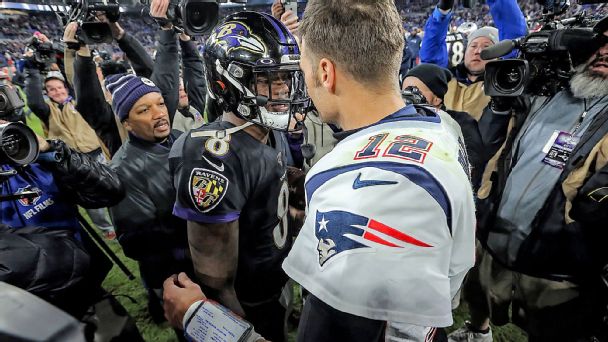
The Cowboys also needed to hold on to those three timeouts to try to get an extra possession if they failed. Taking a timeout to get Cooper back into the game would have meant that the Cowboys would have gotten the ball back with only about 15 seconds left if they had failed on fourth down and then held the Eagles to a three-and-out. They would have gotten the ball back with 55 seconds left under the same scenario with all three timeouts, which is a chance to piece together a meaningful possession as opposed to a Hail Mary. You don’t necessarily want to optimize your decision-making for failure, but the difference between having 55 seconds and 15 seconds on a potential next drive is bigger than the difference between having a gimpy Cooper versus Austin on one fourth-down play.
In the bigger picture of Sunday’s loss, though, the Cowboys’ game plans simply didn’t work. It might owe to Prescott’s shoulder, but they didn’t attack the dismal Philly cornerbacks downfield until it was too late. When the Philadelphia offense was missing Zach Ertz, Wentz was somehow able to find Goedert over and over again to move the ball without a solution from the Cowboys, who spent too much of the game in zone. While the Cowboys might try to keep around Moore as offensive coordinator, I suspect Garrett and defensive coordinator Rod Marinelli will likely pay for a frustrating season with their jobs.
Should the Cowboys have seen this coming? Yes.
How to avoid making the same mistake: Make late-game decision-making part of the interviewing process as the Cowboys find their next coach. The Cowboys shouldn’t hire someone just because they’re aggressive at the right times, and this is an element of the job in which a good analytics department can teach an open-minded coach what to do, but Dallas should try to figure out what its coach will be thinking in key moments before it gets there.
![]()
1. Mitchell Trubisky declined. With Bears fans, the organization and Trubisky himself expecting the young quarterback to take a leap forward in his third season, Trubisky instead struggled mightily. His numbers fell across the board. After averaging 7.4 yards per pass attempt a year ago, he has dropped all the way down to 6.3 yards per attempt, which ranks 31st in the NFL. And while he was an extremely effective scrambler in 2018, the athletic North Carolina product didn’t run at all for most of the season and has just 12 rushing first downs, down from 29 a year ago.
Given what little experience Trubisky had coming out of college — he started just 13 games for the Tar Heels — it was reasonable to hope for him to continuing growing in Year 3. That hasn’t happened. In the fourth quarter alone against the Packers in Week 15, Trubisky showed all of the problems that have plagued him in 2019. He felt imaginary pressure and bailed from the pocket before unleashing a wobbly, incomplete throw. He responded to what seemed like a premature snap by locking on to his pre-snap read and nearly throwing an interception. He launched a pair of throws down either sideline that landed uncatchable out of bounds. When Trubisky did make a nice move to escape a pressure and get to the edge, his throw was wide of the mark. He was unlucky to have a checkdown intercepted by Dean Lowry, but he could easily have thrown three other interceptions during the quarter.
It’s tough to give up on Trubisky, who is still an excellent athlete and capable of making top-level throws, but the Bears run the risk of making the same mistakes the Jaguars made with a similarly tantalizing, often-frustrating quarterback in Blake Bortles. Trubisky pieced together what appeared to be back-to-back impressive starts in wins over the Lions and Cowboys, but the Lions game came against the league’s 29th-ranked pass defense by DVOA, and the Cowboys victory saw Trubisky’s average completion travel just 3.8 yards in the air. Treating those games as confirmation that the quarterback the Bears want to see is buried somewhere underneath bad press or subpar coaching is desperate.
Should the Bears have seen this coming? Yes and no. Trubisky and the Bears’ offense on the whole wasn’t quite as impressive in 2018 as it seemed by raw numbers and memories. Chicago ranked ninth in points per game, but that was partly a product of both return touchdowns and great field position created by takeaways on defense. With DVOA noting that the Bears faced the league’s fourth-easiest slate of opposing defenses, the Football Outsiders stat pegged Chicago as the 20th-ranked offense in the league.
The playoff loss to the Eagles might serve as a useful example. Trubisky was abysmal for most of the first three quarters, nearly throwing a pair of interceptions while going 17-of-29 for 130 yards. Once Matt Nagy started to test the Eagles’ corners with double moves, Trubisky got hot and finished 9-of-14 for 173 yards with a touchdown pass. A beautiful pass helped push the Bears into range for a would-be winning field goal, but you know what happened next. Trubisky unquestionably deserves credit for making those throws, but you can’t solely focus on those as proof of progress while ignoring nearly three quarters in which the offense couldn’t move the football.
It wasn’t reasonable for the Bears to assume that Trubisky would stop creating first downs as a scrambler. Those runs were a huge part of why the Bears were effective on third down a year ago, and after scrambling to move the chains on the first third down the Bears faced all season, Trubisky didn’t run for another first down until Week 8.
How to avoid making the same mistake: General manager Ryan Pace needs to bring in meaningful, significant competition for Trubisky in 2020. I’ve floated Marcus Mariota as a logical option given his experience working with offensive coordinator Mark Helfrich at Oregon. It’s too early for the Bears to give up on Trubisky altogether if they thought he was a potential superstar heading into the season, but the organization can’t rubber-stamp his starting spot in 2020 and just write this season off as a bad dream.

Monday through Friday, host Mina Kimes brings you an inside look at the most interesting stories at ESPN, as told by the top reporters and insiders on the planet. Listen
2. The defense regressed. While the Bears still sport one of the league’s better defenses, they’ve declined in exactly the way we would have expected heading into the season. In 2018, they forced turnovers on 19.1% of drives and picked off 4.4% of opposing pass attempts, with both marks leading in the NFL. There’s also virtually no track record of teams keeping that up year after year, especially in a league in which interception rates have been falling.
Guess what has happened in 2019? The Bears are forcing turnovers on 9.4% of opposing possessions, which ranks 23rd in the NFL. Their interception rate has fallen all the way to 1.5%, which is 29th in the league. The underlying defensive performance hasn’t changed all that much. When they didn’t end drives with a turnover in 2018, they allowed 1.8 points per drive, the second-best rate in football. In 2019, when they don’t end a drive with a turnover, they are allowing 2.0 points per drive, which is fifth in the NFL. Much of the talent is still there, but the results were never going to be the same.
Take No. 1 cornerback Kyle Fuller, who long had a reputation in Chicago for struggling to catch would-be interceptions. Last season, Fuller tied for the league lead with seven picks and was an All-Pro. It was reminiscent of Carlos Rogers’ Pro Bowl season under Vic Fangio in San Francisco in 2011. Rogers went back to his old self the following season, and Fuller has three picks on 97 targets this year, according to NFL Next Gen Stats, with the latter figure ranking third in the NFL. The 27-year-old has subsequently allowed more passing yards as the closest defender in coverage (861) than any player in football.
The Bears were also extremely healthy on defense in 2018, and there just isn’t any way to count on that occurring year after year. Last season, their 11 primary defensive starters missed a total of just eight games. Star defensive lineman Akiem Hicks has missed nine games on his own this season, while starting inside linebackers Danny Trevathan and Roquan Smith have both hit injured reserve. In January, I compared the post-Fangio Bears to the post-Kyle Shanahan Falcons in that they were likely to decline for reasons almost entirely out of their new coach’s control. Chuck Pagano has done a very good job with these Bears, but even if they had brought back Fangio and the same 11 starters from 2018, it would have been tough to expect last year’s results.
Should the Bears have seen this coming? Yes, but I’m not sure there’s too much Pace could have done about it. Of course, that’s partly his own doing, given that the team was down its first- and second-round picks as a result of the trade for pass-rusher Khalil Mack and the move up for wide receiver Anthony Miller last year. Pace didn’t help by trading up again to draft David Montgomery in the third round of the 2019 draft, and the Bears didn’t use a draft pick on a defensive player until the sixth round.
Likewise, they were realistically going to be out on re-signing slot corner Bryce Callahan, who followed Fangio to Denver and then missed the entire season with injuries. Pace did reasonably well to replace Callahan and Adrian Amos with free agents Buster Skrine and Ha Ha Clinton-Dix, although Skrine was repeatedly torched in the slot by Davante Adams during last Sunday’s loss to the Packers.
How to avoid making the same mistake: The Bears should improve their interception and takeaway rates in 2020 by sheer regression toward the mean, although they likely need to do more to address their depth on the defensive side of the ball via the draft. Again, they’re in a compromised position as a product of trades, as they are down their first-, third- and fourth-round picks, although they have an extra second-rounder from the Raiders and should pick up a fourth-round compensatory selection for Amos. Pace has to resist the urge to trade up with the selections he has, especially for more offensive help.
![]()
1. The team lacked discipline. The Browns have committed 148 penalties this season, the second most of any team in football behind the Jaguars. That included a 20-penalty opener in the 43-13 loss to the Titans, the first time a team has hit the 20-penalty mark in a game since the Dolphins did it in 2017. The Myles Garrett incident cost the Browns their top defensive player for the second half. I’m not sure how much this really matters, but when compared to the Patriots, the Browns’ sideline looked a little like 2 p.m. at the main stage of a summer music festival.
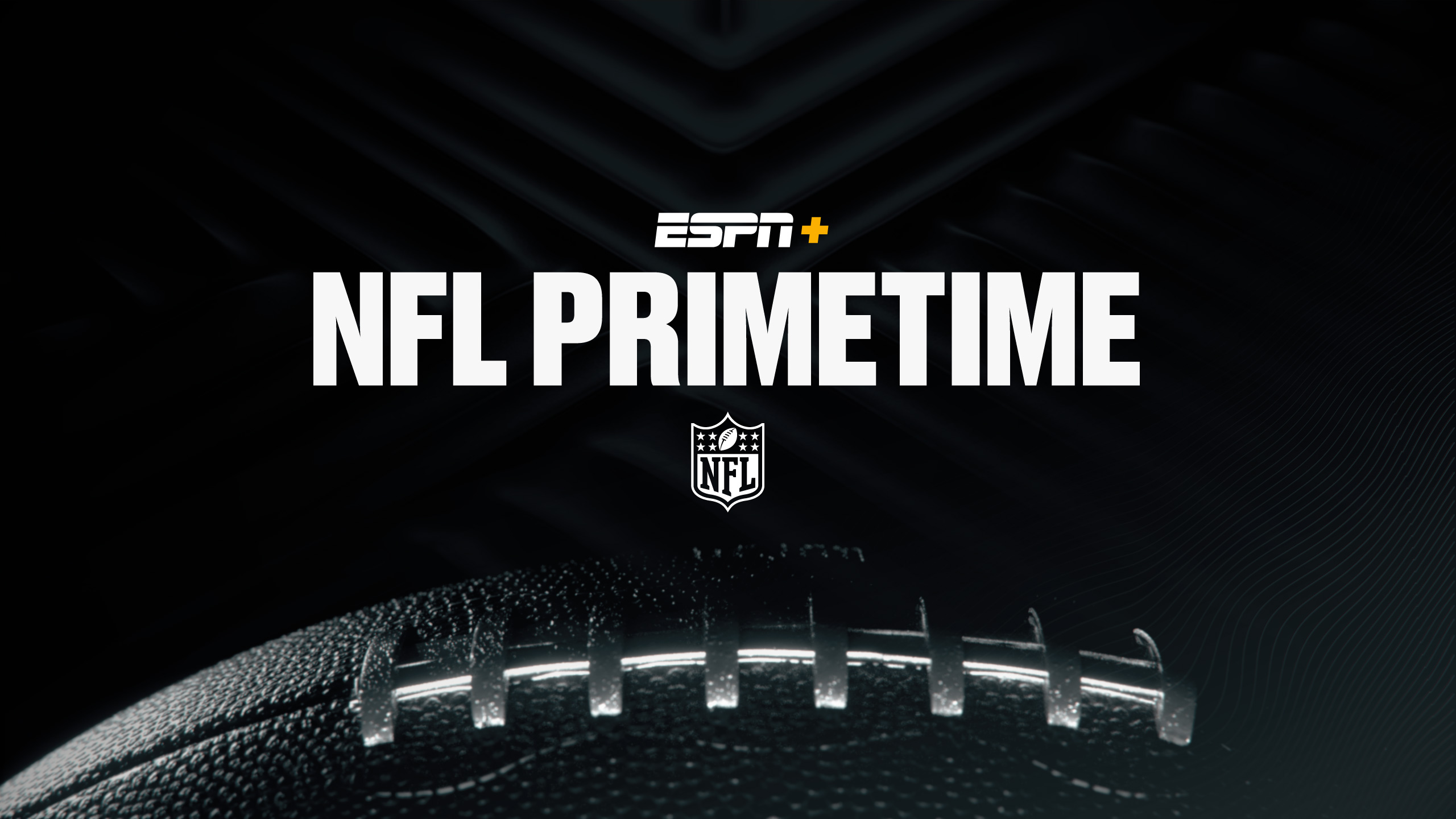
Chris Berman and Tom Jackson recap the weekend’s games with extended highlights and analysis.
The show will stream live at 7:30 p.m. ET each Sunday during the 2019 season and will be available on demand each week until late Wednesday night. Watch on ESPN+
On a less tangible level, the Browns don’t look like they’re well-drilled. Baker Mayfield spent most of the first half playing hero ball, repeatedly drifting to the right to try to make a frantic throw under any pretense of pressure without correcting the problem until late in the season. Mayfield, who was ninth in passer rating under pressure a year ago, was 28th in the same category through the first half of 2019 before improving in recent weeks. Good offensive coaches nip that in the bud in days, not weeks.
Mayfield also picked unnecessary battles in the media with everyone from Duke Johnson to Daniel Jones. I’ll give the Browns the benefit of the doubt and assume that star wideouts Odell Beckham Jr. and Jarvis Landry haven’t asked other teams to “come get them,” but this was supposed to be the season in which the Browns shined in the spotlight. Instead, it felt like the same old Browns.
Should the Browns have seen this coming? Nobody could have anticipated Garrett smacking Mason Rudolph in the head with a helmet, but otherwise, there were reasons to be concerned. Freddie Kitchens hadn’t ever been a coordinator at any level before the second half of 2018, let alone a head coach. Asking a first-time coach to manage a room full of egos when the minimum expectation is a playoff berth is a lot. Kitchens also refused to lighten his load by giving up playcalling duties to former Bucs offensive coordinator Todd Monken. You can understand why they wanted to keep coaching continuity for Mayfield after his excellent second half as a rookie, but that argument doesn’t seem quite as pressing in 2019.
The Browns committed only 43 penalties over the second half of the season in 2018, but they were willing to entertain players who had a penalty history. One obvious candidate was left tackle Greg Robinson, who was brought back on a one-year deal after going 463 offensive snaps without allowing a sack last season. That’s an impressive feat, but he racked up nine holding penalties over the second half of 2018 and drew 31 holding calls from 2014-17, 10 more than any other lineman. Robinson, who was ejected from the opener and benched briefly during the season, has 11 penalties in 14 games this season, including five holding calls.
How to avoid making the same mistake: The Browns probably need to move on from Kitchens. I don’t know that coaches can demonstrably inhibit penalties from year to year, but bringing in someone with a greater attention to detail and experience dealing with a noisy locker room seems to make sense. Likewise, they have to upgrade the weakest spots on their roster by moving on from guys like Robinson, even if they were better than the guys they replaced.
2. They didn’t get 16 productive games out of many of their stars. Few teams came into the season with a core as exciting as Cleveland’s. Just about every one of Cleveland’s stars or would-be stars didn’t live up to expectations:
-
Mayfield had a wildly disappointing season, declining in virtually every statistical category.
-
Beckham battled through a sports hernia and averaged just 63.6 receiving yards per game, down from 92.8 yards per game during his time with the Giants.
-
David Njoku missed three months with a wrist injury and has been a healthy scratch in each of the past two weeks.
-
Olivier Vernon suffered a knee injury in Week 9 and has played just 10 snaps since.
-
Garrett racked up 10 sacks in his first seven games, but he was suspended for the final six games of the year and indefinitely thereafter for the incident with Rudolph.
-
Damarious Randall missed five games and Denzel Ward missed four as part of an early-season stretch in which the Browns were occasionally down all four of their starting defensive backs.
-
Christian Kirksey missed the final 14 games of the year with a torn pectoral muscle.
There were exceptions — Landry, Nick Chubb, Larry Ogunjobi and Sheldon Richardson have generally been healthy and effective — but many of the players who were supposed to be difference-makers for this team haven’t been this season.
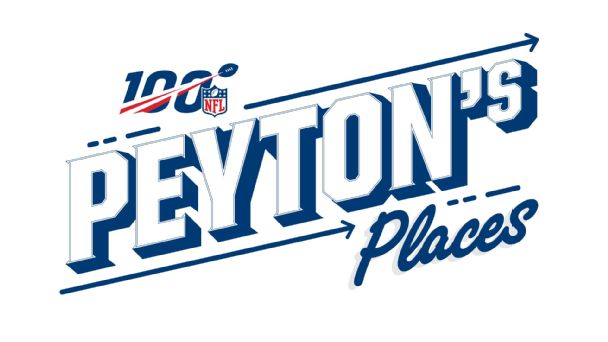
To celebrate 100 years of pro football, Peyton Manning travels the country to see the people and places that made the NFL the NFL.
Watch on ESPN+ » More »
Should the Browns have seen this coming? In some cases. There’s no way the Browns could have passed up trading for Beckham, but the mercurial wideout has played all 16 games only once as a pro. Vernon, his former teammate in New York, hasn’t played a full 16 since 2016. Randall has yet to complete a 16-game season in five years as a pro. The other cases seem like they would have been difficult to predict or project.
How to avoid making the same mistake: I’m not sure they can. The Browns are locked in to most of the players I mentioned in this core. They could trade Beckham or cut Vernon or Kirksey, but those moves would just create holes on the roster, especially with Garrett’s status uncertain and Joe Schobert’s pending free agency.
The Browns will have to hope better coaching gets Mayfield back on track. Njoku’s future with the team is interesting, given that he was drafted before general manager John Dorsey arrived and really hasn’t done much yet as a pro. Njoku obviously has considerable upside, but with the Browns leaving him inactive for the past two weeks, would Dorsey consider trading the starting tight end he inherited from Sashi Brown?
![]()
1. They ignored the preponderance of evidence and believed their defense would be good. While the Falcons’ defense was good during the 2016 and 2017 postseasons, Dan Quinn’s unit ranked 26th, 22nd and 31st over the three seasons prior to 2019. The Falcons evidently wrote off 2018 as an injury-riddled, wasted season and essentially ran things back in 2019 with the same core of talent. General manager Thomas Dimitroff used two first-round picks on offensive linemen and didn’t make any major additions on defense beyond defensive end Allen Bailey, who was signed in late July.
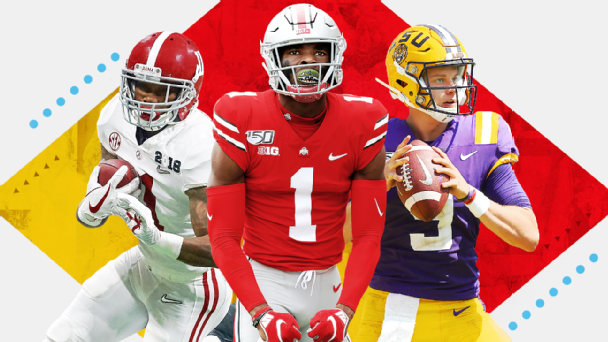
You know how things went. Even though the Falcons have improved substantially since their bye, they rank 23rd in defensive DVOA and 25th against the pass. They have the league’s worst pressure rate at 21.5%, and when they don’t get pressure, they allow the league’s third-worst QBR, with opposing quarterbacks going off for an 80.1 mark. Lamar Jackson has the best QBR in football this season at 82.1. I would not recommend this as a pass-defense strategy.
The Falcons got about every step of this defense’s offseason wrong. They let pass-rusher Vic Beasley Jr. play out his fifth-year option at $12.8 million despite the fact that his 15.5-sack season from 2016 looms as an obvious, unsustainable outlier on his career. A run of 6.5 sacks in his past seven games, three of which have come against widely sacked Panthers starter Kyle Allen, have pushed Beasley’s 2019 total to eight. That’s now his second-highest full-season total as a pro.
Dimitroff devoted most of his resources this offseason to fixing the offensive line, first by signing Jamon Brown, James Carpenter and Ty Sambrailo, then by using two first-round picks on Chris Lindstrom and Kaleb McGary. The trade for McGary cost Atlanta its second- and third-round picks, and it didn’t use a selection on a defensive back until drafting Kendall Sheffield with the 111th pick. While the Falcons had holes on their line, this was a spot in which they had already spent serious money on retaining Jake Matthews and signing Alex Mack. It’s certainly fair to think that the Falcons signed those free agents not knowing they would get Lindstrom, but trading up for McGary with so many needs on defense was probably too aggressive, regardless of how McGary turns out as a player.
I can’t fault the Falcons for using the summer to re-sign their two best defenders in Deion Jones and Grady Jarrett, but many of their other big moves haven’t worked out. Desmond Trufant hasn’t been the same player since returning from a pectoral injury in 2016. First-round safety Keanu Neal, who tore his Achilles in September, hasn’t been able to stay healthy, while fellow first-rounder Takkarist McKinley was disappointing in his first season as a full-time starter in 2018 before hitting IR himself. Safety Ricardo Allen was last seen being buried on one of the blocks of the year by George Kittle, although the Falcons eventually pulled out a 29-22 victory in one of their best performances of the season.
Should the Falcons have seen this coming? Yes. Hoping that the defense would improve without making a significant investment was shortsighted. If they believed in the raw numbers that said that the Falcons were the eighth-best scoring defense in the league in 2017, the Falcons needed to be more curious and do a better job of self-scouting. (They were eighth only because they faced the league’s fewest drives and inherited great field position.)
How to avoid making the same mistake: Wholesale changes, which include replacing Quinn as coach. The Falcons have to let Beasley leave, late-season run be damned, and invest in improving their pass rush. They have their own first- and second-round picks and an extra second-rounder from the Patriots as part of the Mohamed Sanu deal; those selections need to go toward the pass defense.
2. Dirk Koetter didn’t fix the offense. The Falcons seemed exhausted of Steve Sarkisian when they fired the former Washington head coach after last season. The offense took a step backward after the Falcons hired Sarkisian to replace Kyle Shanahan, and Falcons fans were certainly intrigued when Atlanta replaced Sarkisian with Dirk Koetter. The former Bucs coach had previously spent three seasons as Falcons offensive coordinator from 2012 to ’14, with the 2012 offense finishing seventh in points per game and coming within one trip of making it to the Super Bowl. With Shanahan unavailable, Koetter might have been the next-best option.
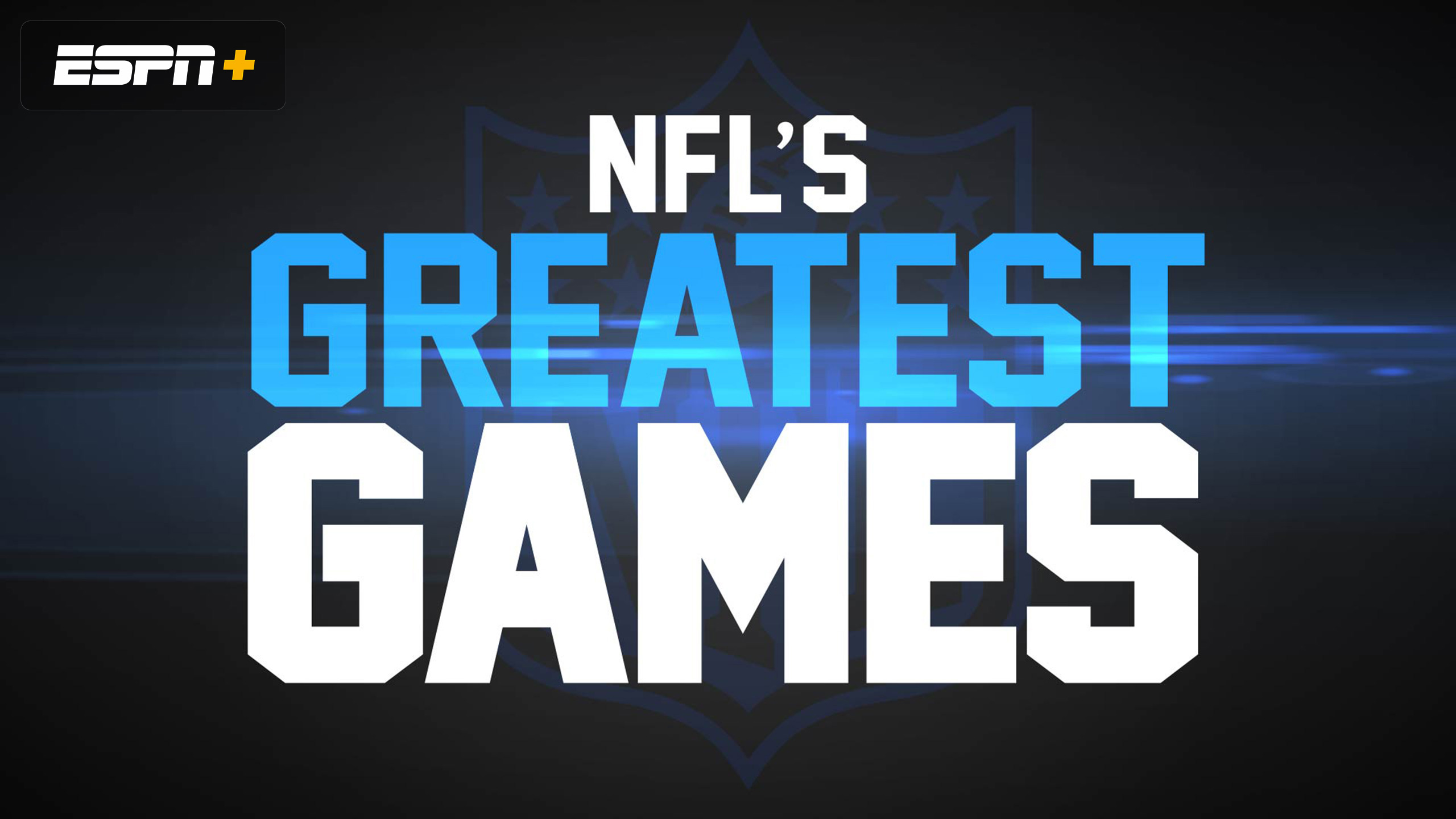
Relive some of the league’s most memorable games, from Super Bowl XLII to the 2018 AFC title game. Watch on ESPN+
The most frustrating spot for the Falcons after Shanahan left was their performance in the red zone. After the 2016 Falcons averaged 5.2 points per red zone trip, the Sarkisian-led offenses failed to live up to that standard. The 2017 offense was a mess at 4.5 points per red zone possession and ended its season by failing at the goal line against the Eagles in the playoffs. When the same offense failed at the same spot in the season opener against the Eagles in 2018, the die had been cast. Even though Sarkisian’s red zone offense went on a lengthy touchdown streak shortly thereafter and eventually averaged 5.0 points per red zone possession, Falcons fans wanted to see the Shanahan red zone offense make its return with Koetter in the fold.
That simply hasn’t happened. The Falcons have averaged 4.8 points per red zone possession this season, slightly worse than the Sarkisian offense we saw a year ago. They’ve done that with Devonta Freeman on the roster for a much larger portion of the season than he was in 2018, when Freeman played only 67 offensive snaps. And while injuries have hit the offensive line, Dimitroff’s offseason investments have left the Falcons with a much deeper line than the one they used in 2018. Even so, the offense has been closer to good than great in the red zone.
The hidden truth is that Shanahan’s genius isn’t really in the red zone, where performance is random from year to year. The 49ers, for one, had one of the worst red zone offenses in football under Shanahan a year ago. The San Francisco coach really makes his mark on first downs. The Falcons averaged 7.6 yards per play on first down in 2016, nearly a yard more than any other team in the league and the best first-down performance I was able to find going back through the mid-1990s. There’s a good chance the 2016 Falcons were the best first-down offense in NFL history.
Guess who leads the league in yards per play on first down in 2019? It’s Shanahan’s 49ers, who are averaging 6.6 yards per play. Under Sarkisian, the Falcons weren’t able to keep up with that historical outlier of a season, but they averaged 6.4 yards per first-down play in both 2017 and 2018, ranking in the top five for offenses in both years. Koetter’s 2019 offense is averaging 5.7 yards per play on first down, which ranks 11th. The Falcons fired Sarkisian after his offense finished eighth in DVOA last season, and Koetter’s offense subsequently ranked 16th in DVOA this season through Week 15.
Should the Falcons have seen this coming? Maybe? We know the ceiling for this offense is astronomical based on 2016, but the Falcons were very good on offense last season! They ranked 10th in points per game, but that was a product of their defense giving up long, methodical drives. They racked up only 165 meaningful possessions on offense, the fifth fewest in football, and inherited the league’s third-worst average starting field position. The Falcons were sixth in points per drive and eighth in DVOA. If you assume that the offensive line improvements would have plugged the biggest holes in the offense, I can see a scenario where they do have a top-three offense, but just about everything has to go right for your offense to get there.
How to avoid making the same mistake: The Falcons will likely move on from Koetter if they fire Quinn and overhaul their coaching staff.
![]()
1. They were beset by injuries. It was Joey Bosa and Hunter Henry last season. This year, the Chargers have had just eight starters start all 15 games. While that list thankfully includes key contributors such as Bosa, Keenan Allen and Casey Hayward Jr., just about every other member of this team’s core has missed action.
The Chargers didn’t do the best job of handling the injuries. There was no realistic way to replace Okung, but take Badgley, whom the team didn’t place on injured reserve at the beginning of the season. The Chargers started the year by letting punter Ty Long handle field goals; for a team that spent years flailing in its attempts to try to find at least one useful kicker, handing the job over to the punter just seems cocky. After Long struggled, the Chargers eventually signed Chase McLaughlin for a six-game stint, but they were stuck carrying Badgley on their roster the whole time.
Should the Chargers have seen this coming? Yes, they’re the Chargers. The top 10 spots on their roster are as talented as any group in football, and the chances of those 10 players all playing on the field together for any length of time are remarkably slim.
I’m not kidding. The Chargers’ top four players on defense are Hayward, James, Bosa and Ingram, who would be every-down players when healthy for any defense in football. The defense has faced 1,851 snaps since the start of 2018. Those four defenders have been on the field together for 446 of those snaps, or just over 24% of the possible opportunities.
How to avoid making the same mistake: Move back to San Diego? Apologize to whomever the Chargers wronged in a former life? This has been an annual problem for the league’s most frustrating team, and with little control over injuries, the Chargers just have to hope they find a year when they get everyone or close to everyone healthy for a long stretch of time. Maybe moving out of Carson will help.
2. They reverted back to their 2015-17 form in close games. After going 7-20 in games decided by seven points or fewer between 2015 and 2017, the Chargers bounced back in close games and went 5-1 in those games a year ago. History tells us that remarkably good or bad performances in close games tend to bounce back the following year, but after four years of extremely polarizing performances in one-score contests, the hope was that the Chargers would just win half of their close games without having to resort to dramatics.
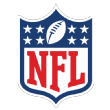 All the latest news on who’s in, out and questionable:
All the latest news on who’s in, out and questionable:
• Injuries tracker: All 32 teams »
• Depth charts for every team »
More NFL coverage »
Instead, the Chargers are 2-9 in games decided by seven points or fewer. There have been only 26 instances of a team losing eight or more close games in a season since 1989. The Chargers have had that happen three times over the past five years. They’re shockingly close to 0-11 in those games; they beat the Colts in an overtime game where Adam Vinatieri missed two field goals and an extra point, and later topped the Bears in a 17-16 game where Eddy Pineiro missed a 41-yarder at the buzzer.
I’ll spare you the list of close Chargers losses and save it for the “teams most likely to improve” column over the summer. My favorite, I will admit, is Gordon coming back from his holdout and fumbling on the 1-yard line down three points with 19 seconds to go against the Titans. Or maybe it was Hayward committing pass interference on a desperate Drew Lock pass with nine seconds to go in a tie game to set up a game-winning Brandon McManus field goal. With one game to go, I wouldn’t bet against the Chargers finding a new, exciting way to lose.
Should the Chargers have seen this coming? They should have expected to win fewer of their close games in 2019, but I don’t think the Chargers should have expected to go from winning 83% of their one-score tilts to winning 18% of them, no.
How to avoid making the same mistake: Even the Chargers improved in one-score games after going 1-8 in 2016, so as long as the Chargers show up for all 16 games in 2020, they should do better in the close ones.
Should the Chargers have seen this coming? No. Rivers was excellent in 2018 and looked his usual self to start the season in 2019. While he was obviously getting to the age where the cliff could come out of nowhere, there weren’t any reasons to think he was done or about to be done.
How to avoid making the same mistake: The Chargers can move on from Rivers when his contract expires this offseason. Tyrod Taylor and rookie fifth-round pick Easton Stick are both under contract for 2020, and the Chargers could address the quarterback position with their cap space or draft picks.
![]()
1. The offensive line collapsed. When I wrote about the reasons the Rams were likely to decline in 2019, I mentioned the offensive line as my biggest concern with the roster. They were replacing veterans Rodger Saffold and John Sullivan with untested second-year linemen Joe Noteboom and Brian Allen.
For a team whose offensive line had been both extremely effective and remarkably healthy in Sean McVay’s first two seasons, it was an obvious point of weakness. And the line has been a mess, although not necessarily in the ways we might have expected. Noteboom tore his ACL in Week 6. Allen looked like he belonged as a starter before suffering a season-ending MCL injury in Week 10.
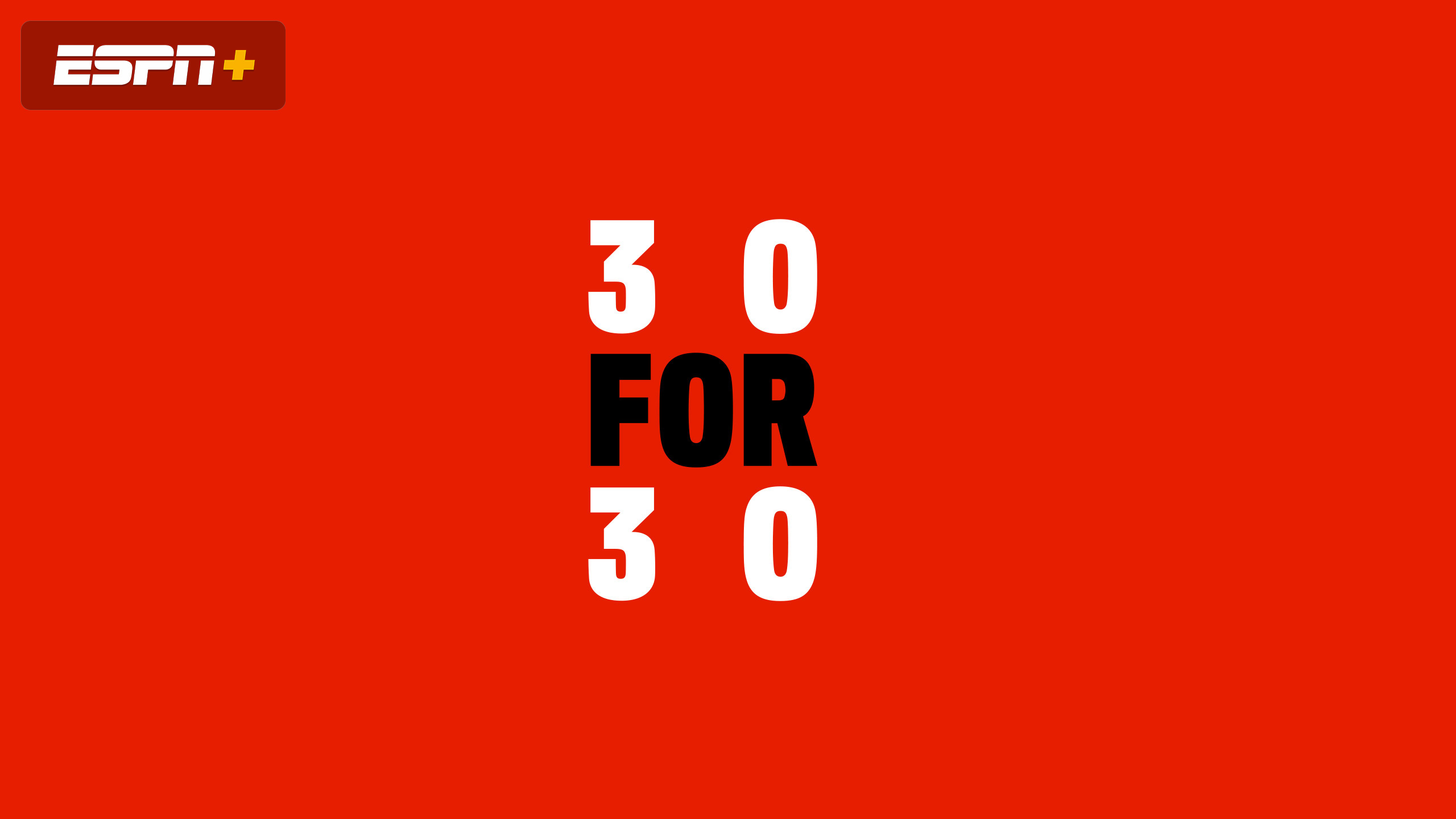
ESPN’s award-winning documentary series. Watch on ESPN+
More disconcertingly, the expected strength of the line — the tackles — has been a disaster. Right tackle Rob Havenstein, who committed only two penalties last season, committed eight in nine games before suffering his own knee injury. Andrew Whitworth hit the wall at age 38, as the superstar left tackle has clearly lost a step. Whitworth has committed a career-high eight holding penalties, tied for second most in the league behind Denver’s Garett Bolles. The Rams will likely need to replace Whitworth in their lineup next season without the benefit of their first-round pick, which went to the Jags in the Jalen Ramsey deal.
Should the Rams have seen this coming? They should have expected their offensive line to decline in 2019. Counting on Whitworth to stay at a Pro Bowl level this late in his career was always a big ask, given that just four tackles in league history have started anything close to a full age-38 season. I don’t think they could have expected Havenstein to decline.
How to avoid making the same mistake: L.A. isn’t likely to have much cap space in 2020, so it needs to use the remaining draft capital it has to supplement the line.
2. They’ve been hit by injuries. I was concerned about the Rams dealing with more injuries, especially on offense. McVay’s team had the league’s fewest adjusted games lost on offense in 2017 and its second fewest in 2018. For an offense that loved to run the same offensive personnel for more than 90% of the snaps when everyone is healthy, it’s tough to imagine that keeping up into 2019.
In addition to the three offensive linemen I mentioned, Brandin Cooks, Robert Woods, Gerald Everett, Tyler Higbee and Todd Gurley have all missed time with injuries. On defense, the Rams lost safety John Johnson to injured reserve with a shoulder injury and Aqib Talib (before he was traded) with a rib ailment, while Clay Matthews was out for three games after breaking his jaw against the Seahawks. Rookie Taylor Rapp, who took over in the starting lineup for Johnson, appeared to blow the coverage on the third-and-16 conversion that set up San Francisco’s winning field goal on Saturday.
Should the Rams have seen this coming? They might have wanted to believe they were immune to injuries after two extremely healthy seasons under McVay, but decades of evidence suggests that no team can avoid the injury bug. The Rams have built a top-heavy team by trading for stars and sending away draft picks, and it came back to bite them in 2019.
How to avoid making the same mistake: At this point, they have established their team-building philosophy. They’re not about to suddenly trade their stars away. They aren’t going to have great depth, and if their stars aren’t healthy, we’re going to see uneven seasons like 2019 in the years to come.
• Watch: Russell Wilson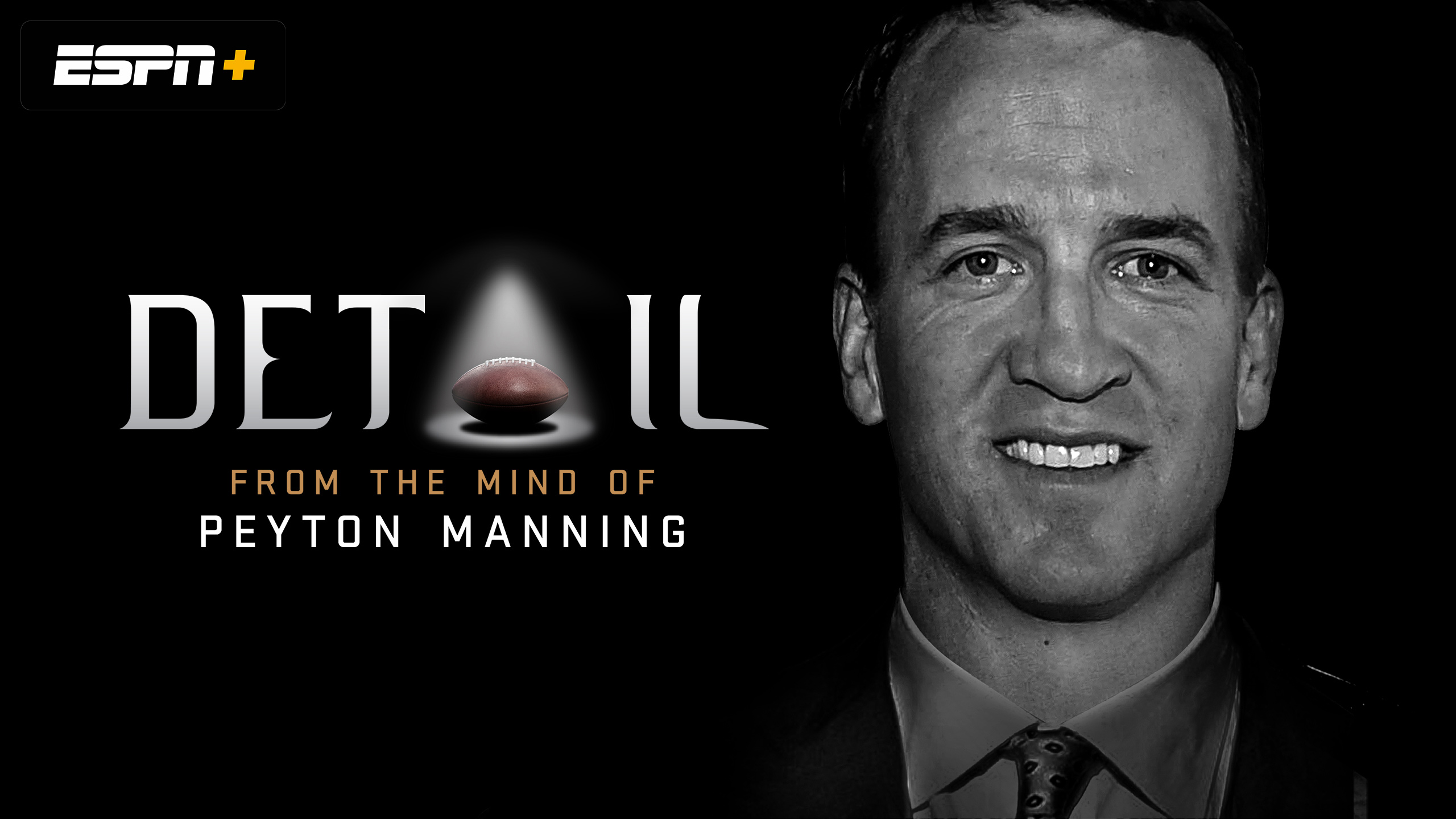
• Watch: Baker Mayfield
• Watch: Patrick Mahomes
• Watch: Tom Brady
• Watch: Andrew Luck
• Watch: Deshaun Watson
• Watch: Philip Rivers
• Watch: Eli Manning
3. The offense lost its identity. I figured McVay would have an antidote to the 6-1 fronts that the Lions showed and the Bears and Patriots emulated last season in limiting what had been a wildly productive Rams offense. For most of the year, McVay hasn’t. Just about every team the Rams have faced has used those six-man fronts at least part of the time, and it has slowed down the outside zone and killed Jared Goff’s effectiveness on play-action. Goff ranks 31st in the league in passer rating on play-action in 2019.
What has been strange is just how McVay has handled the whole thing. The Rams eventually moved to a heavier dose of toss plays and duo runs to try to defeat teams that were cheating toward the edge, but those haven’t been quite as effective. Early in the year, the Rams were conservative with Gurley and framed that as a coach’s decision. In recent weeks, they’ve focused the passing game around Higbee and begun to keep Gurley on the field for virtually every play, even late into blowouts, with McVay saying he had been an “idiot” to keep Gurley on the sideline earlier in the year.
I would put a larger portion of the blame on Goff, because McVay’s offense is still creating makeable passes. Goff’s expected completion percentage is 66.5%, according to NFL Next Gen Stats. He is instead completing 62.8% of his throws. The only quarterbacks with 200 attempts or more who have a larger negative gap between their completion percentage and expected completion percentage than Goff are rookies Gardner Minshew and Dwayne Haskins.
Should the Rams have seen this coming? The Lions, Bears and Patriots all used this tactic with varying levels of success at the end of 2018. It would have been naive to imagine opposing defenses wouldn’t emulate them in 2019, although I was also expecting McVay to have more answers early in the season.
How to avoid making the same mistake: McVay needs to come up with new solutions this offseason. The Rams are locked into their offensive core for the foreseeable future, so this won’t be solved by adding weapons around Goff.
Stream live sports and original content on ESPN+. Sign up today
4. The unsustainable stuff wasn’t sustainable. In my preseason column, I noted that the Rams had gone 6-1 in games decided by seven points or fewer, which has historically been almost impossible to keep up. The Rams are 2-3 in those same games this season, including a loss to the Seahawks where reliable kicker Greg Zuerlein missed a 44-yard field goal with 15 seconds to go in a 30-29 defeat.
Likewise, the Rams’ defense was incredible at recovering fumbles last season. Wade Phillips’ unit picked up 12 of the 14 fumbles it forced, while the Rams as a whole nabbed a league-best 71% of the fumbles in their games in 2018. There’s no track record of a Phillips defense or a defense managed by anybody recovering fumbles at that sort of rate over multiple seasons. This season, the Rams have recovered 48.6% of the fumbles in their games, with the defense down to an even 40%.
Should the Rams have seen this coming? I know the Rams are readers, so yes.
How to avoid making the same mistake: There’s not much they can do here. With a 16-game schedule, variance is going to swamp fumble recovery rates.
Credit: Source link